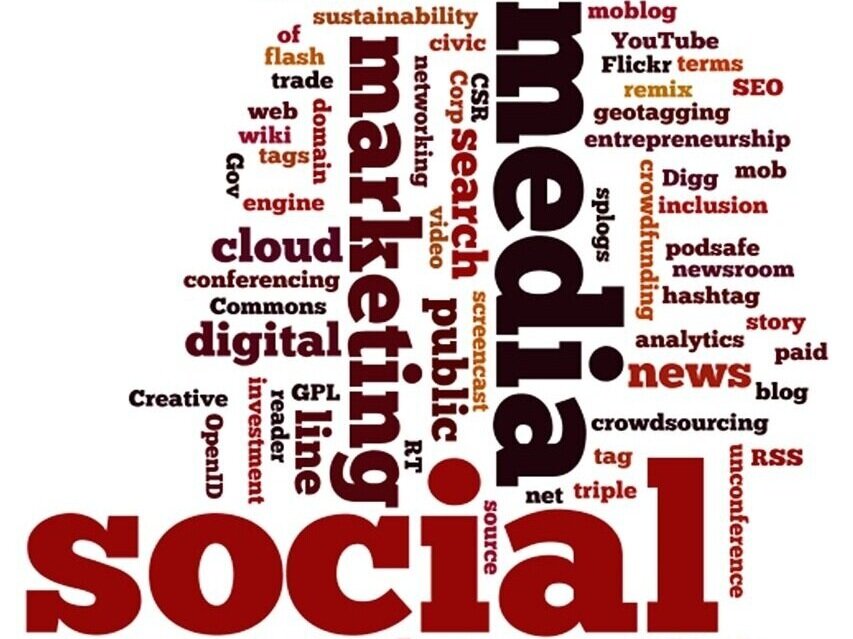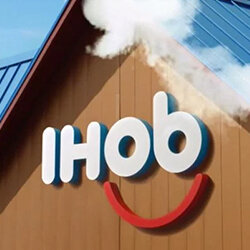A Digital Retrospective: Eye-Catching Social Marketing Campaigns
Digital marketing is a fluid industry in which things can change in a second. That holds true when it comes to e-commerce, crm, automation, workflows, social and just about anything else. This requires marketers to be able to think quickly and execute even quicker all while being hyper aware of how to constantly develop successful marketing campaigns that put them ahead of the competition and in the spotlight.
When we analyzed some of the most iconic digital campaigns, we noted many similarities: a focus on safety, rewarding loyal consumers, selfies, and taking radical steps to create word-of-mouth.
Here’s a recap of our favorite campaigns that rose to internet fame in recent years, and takeaways you can apply to your digital marketing initiatives.
Chipotle partners with Venmo
In an effort to stand out in the crowded quick service restaurant space, Chipotle took a truly genius approach.
Through market research, it found that among nearly four billion loyalty memberships held, the average U.S. consumer only actively uses about half of the memberships — but 71% said they’d be more likely to use a mobile-based membership. To appeal to the rise of mobile usage, they tapped into Venmo, the fastest-growing peer-to-peer payment app.
For a chance to earn free money, consumers simply had to enroll in Chipotle Rewards and submit the phone number associated with their Venmo account. Within 24 hours, Chipotle surprised random customers with deposits between $1 and $500 into their Venmo accounts. In total, Chipotle directly paid 100,000 fans a total of $250,000.
The best part of this campaign? Each payment appeared publicly in Venmo feeds, acting as free advertising. Chipotle was not only the first company to partner with Venmo, but it also became the first restaurant to have a branded emoji on Venmo — the Chipotle pepper — used for splitting and sharing payments.
Takeaway: Chipotle knew that growing customer loyalty was key to engagement, and what better way to increase loyalty than pay consumers directly? Before the campaign, Chipotle was the fourth most mentioned brand on the peer to peer payment app. The company also leveraged the fact that Gen Zers — one of the food chain’s core audiences — are very active on Venmo.
Miller Lite goes dark on social media
The beer company took a tremendous risk in their latest campaign they called “Going Dark” by encouraging users to unfollow them for a chance to win free beer. The premise of the campaign? Persuade people to put down their phones, get together with friends, and enjoy a beer.
Declaring themselves the original social media, Miller Lite successfully tapped into a time when your number of followers didn’t matter and authentic relationships did. In its campaign to combat digital addiction, the company shut down their social channels for two weeks and encouraged users to unfollow them in the ultimate sweepstakes.
The rules of the Unfollow Campaign were simple: text the brand a screenshot of you not following the brand on Facebook or Instagram, and they will compensate you for a beer via PayPal. Miller Lite gave away a free beer to 118,000 people, the number of followers the brand had on Instagram before the campaign launch.
Takeaway: Although social media is a critical marketing avenue, this radical campaign garnered amazing results by discouraging social media usage. After only a week of asking users to unfollow them, the campaign earned more than 620 million impressions, and ironically enough, Miller Lite gained a net 5,000 followers.
IHOP’s fake name change
IHOP’s marketing campaign began as a cryptic Twitter announcement: the all-day breakfast teased that it would change its name to “IHOb.” For a week, IHOP had their fans try to guess what the “b” stood for.
The results? 30,000 Twitter users responded with their guesses — “blockchain” and “bacon” were among the top retweeted guesses. IHOP’s campaign became a space for social media users to show off their own creativity and unique wordplay.
Eventually, the company unveiled that the “b” in IHOb stood for “burgers,” a recent product line it had added to its menu. Through this promotion, or bromotion as IHOb would call it, the breakfast chain quadrupled its burger sales and exploded across social media.
The stunt earned IHOP the first, second, and third trending spots on Twitter. On top of that, there were over 1.2 million tweets about the brand, and over 2.1 million social media conversations about IHOb in the first 10 days following the release of the IHOb news. Over 100 brands and celebrities joined in, expanding the reach of the fake name change.
Takeaway: Sometimes, the best marketing doesn’t stem from stellar content, but rather from sparking conversations and letting your audience do most of the talking. Word-of-mouth is an extremely powerful marketing tool that should not be overlooked.
Burger King’s use of pop culture
Would you believe a banana duct taped to a wall is worth $120,000? Neither would we — but Italian artist Maurizio Cattelan's banana piece, “Comedian,” sold for that much at Art Basel Miami.
When the story went viral, Burger King France saw an opportunity to capitalize off the obscurity of it. The fast food chain tweeted out an ad: an image of the multi-thousand dollar banana duct-taped to the wall placed aside an image of a BK french fry taped to the wall with a price tag of €0.01.
After Burger King’s innovative stint, other brands jumped on the bandwagon, scrambling to make their own witty versions. Perrier posted a photo of its signature bottle of carbonated water taped to the wall, calling it priceless compared to the $120,000 banana. Pepsi, Popeye’s, Dr. Pepper, and Moon Pie parodied the viral artwork as well.
Takeaway: Leveraging pop culture and trending events is a great way to get consumers talking. The taped banana craze allowed brands to market themselves in a unique way — showcasing their creativity rather than their specific products.
Apple’s #ShotOniPhone
Since 2015, Apple has run a contest in which it challenges iPhone users to take beautiful pictures using nothing but their iPhone cameras. It continued its annual contest in 2019, asking users to post their best pictures to Instagram and Twitter with the hashtag #ShotOniPhone.
At the end of the contest, a panel of judges — which included former White House photographer Pete Souza — reviewed worldwide submissions and selected 10 winning photos. The winning photos were featured on billboards in select cities, Apple retail stores, and across Apple’s social media channels.
The annual campaign is not only a great way to reward loyal customers, but it also highlights the photography features of the newest iPhone models each year. In 2019, Apple highlighted settings like sophisticated portraits, Smart HDR, and Depth Control on the iPhone XS, iPhone XS Max, and iPhone XR.
Takeaway: With this campaign, Apple simultaneously promotes one of its most popular product features and invites consumers to actively participate with the brand. Consumers are constantly looking for more immersive experiences, which this campaign strives to provide.
McDonald’s flips its arches
An astounding 60% of McDonald's managers are female, and the company has made ongoing efforts to empower women and support initiatives for gender equality for years.
In honor of International Women’s Day, the fast food chain flipped its iconic golden arches of 100 of its franchises across the country, displaying a “W” rather than an “M”. It updated its profile pictures to the flipped M across social media profiles, and its digital channels highlighted McDonald’s most important women in the company’s history.
Although the stunt garnered mixed reactions — with some people calling out McDonald’s for their treatment of workers — it was overall a great way to grow the conversation internally. On top of that, it generated 1.6 billion impressions globally and became the top searched brand query on International Women’s Day.
Takeaway: A grand, symbolic gesture like this one can be a great way to show support for a cause you support. McDonald’s campaign also showed support for an important employee demographic — and a positive employee experience is crucial for cultivating a positive customer experience.
CVS’s authentic approach to beauty
In 2017, CVS began to see a decline in their beauty sales — a trend that was also true for other retailers. Through internal discussions, marketing research, and listening to customers on social media, the company recognized a common behavior: Customers were moved away from airbrushed beauty brands in favor of smaller indie labels with more authentic identities.
Its research sparked the launch of the Beauty Unaltered campaign, beginning in 2018. The brand announced the implementation of the Beauty Mark, a watermark that would appear on authentic imagery that had not been materially altered. The ongoing campaign not only applies to images on CVS’s website and social media feeds, but it also extends to its in-store presence.
The retailer worked with major beauty brands, including CoverGirl and Revlon, getting them to comply with its new beauty standards. As of February 2019, 70% of the beauty imagery in CVS stores was unaltered and labeled with the Beauty Mark, and it has plans to have fully transparent imagery by the end of 2020.
Takeaway: It’s extremely important for brands to know their audience preferences and stay up-to-date on trends — in CVS’s case, the trend was authenticity. With the countless retouched and edited images that bombard women every day, CVS saw a unique opportunity to launch digitally unaltered images and ads.
Volvo’s #SelfieForSafety
Earlier in 2019, Volvo launched its E.V.A. (Equal Vehicles for All) initiative aimed at building a digital library of safety data, including the fact that women are more likely to be injured in accidents.
Its creative strategy focused on safety sparked #SelfieForSafety — a social media effort aimed at creating the largest crowdsourced study for car safety. Who knew a selfie could be transformed into a life-saving research tool?
During the campaign, Volvo asked drivers to take a selfie with their safety belts on, post it on social media, and tag it #SelfieForSafety and @volvocars. When Volvo Cars Safety Center reviewed the selfies, it found that an astounding 4 in 10 participants in the study wore the safety belt incorrectly.
Takeaway: Volvo’s campaign put a new twist on the old "tag us on social media" ploy. It effectively used the selfie in an unselfish way and ties in its corporate social responsibility: advocating for safety on the road.
Starbucks creates a secret society
The coffee giant’s Pumpkin Spice Latte, or PSL, is a highly-anticipated beverage that generates tons of excitement surrounding the entire autumn season. Over the years of the PSL’s existence, Starbucks had noticed that fall enthusiasts were often criticized for their love of the season.
To give year-round fans of fall a safe space to celebrate their mutual excitement surrounding the season, Starbucks created a private Facebook group they named the Leaf Rakers’ Society. The secret society, with over 37,000 members, quickly grew into a powerful hub for community building. Starbucks shared a link to its Twitter and Facebook feeds, inviting superfans to join. The silver lining? Starbucks spent zero dollars on this effort.
Takeaway: Brands can take advantage of community groups and forums to unite like-minded consumers by their loyalty to a brand or product. Starbucks not only increased positive conversations surrounding the Pumpkin Spice Latte, but it also created a supportive space where so-called “Leaf Rakers” could share personal accomplishments and moments in their lives.
Conclusion
From approaching social issues to building communities to capitalizing off trends and pop culture, brands have set the bar high for innovative digital marketing strategies. The bottom line for creating effective campaigns? Make personal connections with your consumers and drive impactful conversations that will ignite curiosity about your company.










